History of fume hoods
One of the first modern-era fume hoods goes back to Thomas Jefferson [when he used a local chimney to vent harmful gasses at the University of Virginia]. Jefferson built a hearth with a bottom made of sand and specifically designed flues to exhaust harmful gases.
Later, Thomas Edison would follow Jefferson’s example and create what is considered to be the very first design documented fume hood. Over time, fume hoods would improve, but their original design and purpose would remain intact.
The idea of a fume hood is to protect people who work inside a building from harmful or unpleasant exposure to chemicals or fumes. A fume hood’s effectiveness is measured by how well it does one thing: contain harmful chemicals and gases.
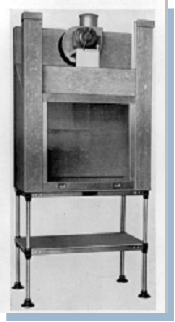
Early on, fume hoods did not have sashes, the user simply stood in front of the opening. This blocked air flow from exhausting gases and fumes that were directly in front of the user’s face. Over time, the development of the sash allowed users to have more control over the air current and protect themselves more during experiments.
Air flow
The main purpose of a fume hood is user safety. The ability of a fume hood to protect a user is today measured by the ability of the fume hood to contain and exhaust whatever is being done inside the fume hood enclosure. Complex airflow modeling and tracer gas validation systems are used to provide confidence in the fume hood’s effectiveness.
From the 1930’s to the 1970’s the main focus in fume hood technology was improving the airflow, which helps with containment. Subsequent developments have focused on efficiency and user experience.
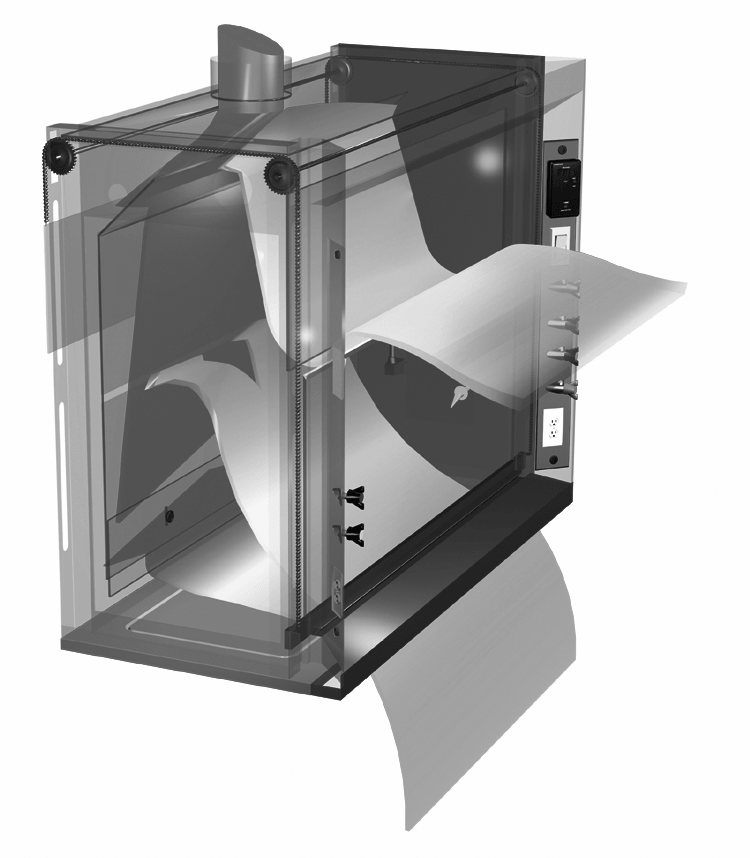
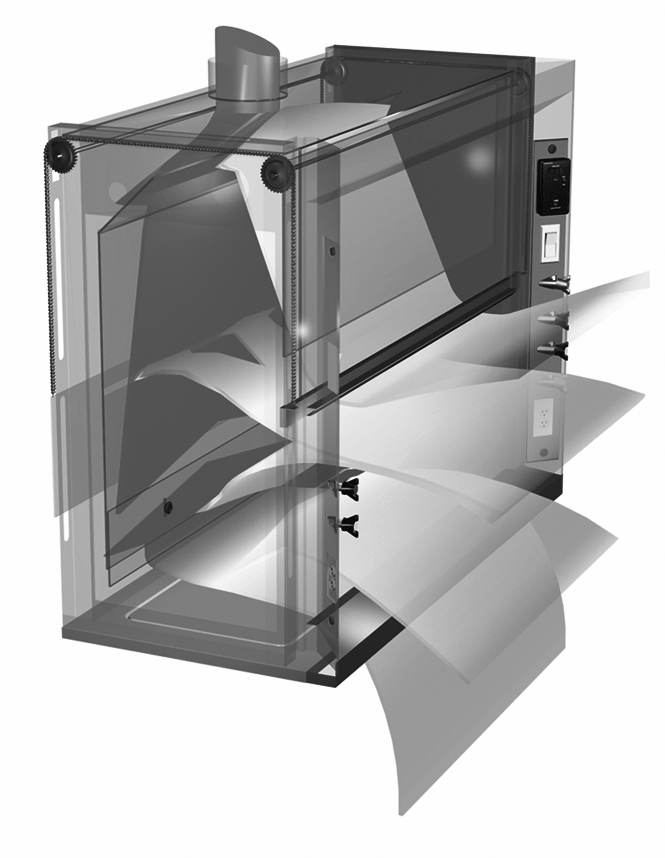
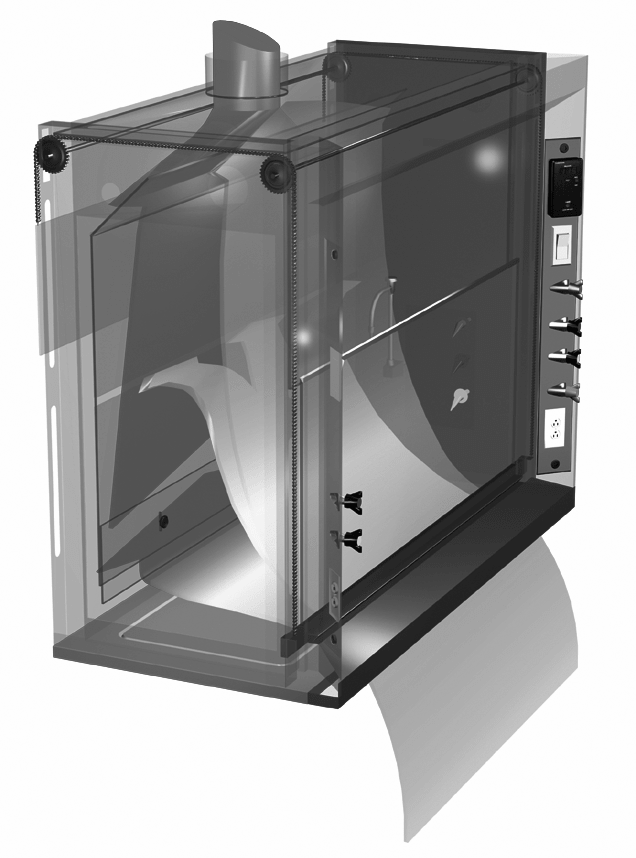
*room air flow rendering into open and closed fume hoods with baffle patterns.
Types of fume hoods
There are two main installation configurations for laboratory fume hoods. They can be installed as a bench fume hood or as a floor mounted fume hood, sometimes called a “walk-in.” There is a third, less common, type of fume hood called a mobile fume hood.
Bench mounted fume hoods
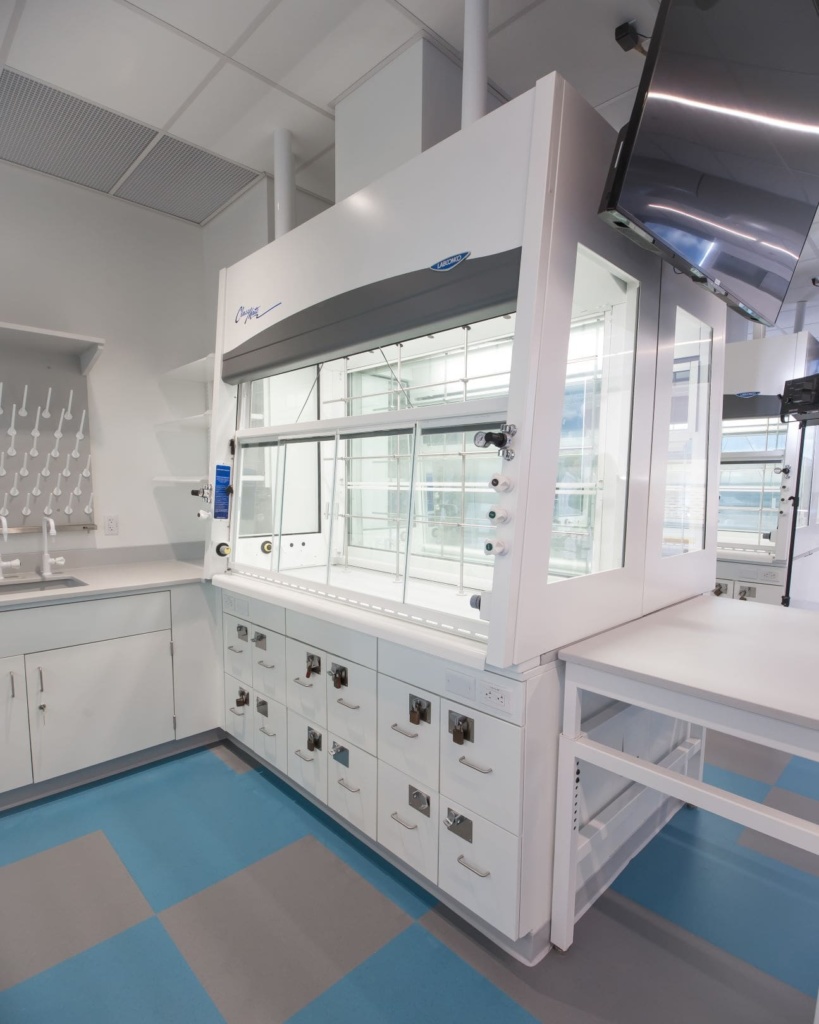
Bench mounted fume hoods sit at waist height and operate like an enclosed work bench. They can be installed on existing cabinets, supplied as a complete unit with new cabinets, or placed on a frame/stand.
This configuration is by far the most common. The platform maximizes containment, puts the users’ work at a comfortable operating height, and still leaves room for customized storage below.
Floor mounted (“walk in”) fume hoods
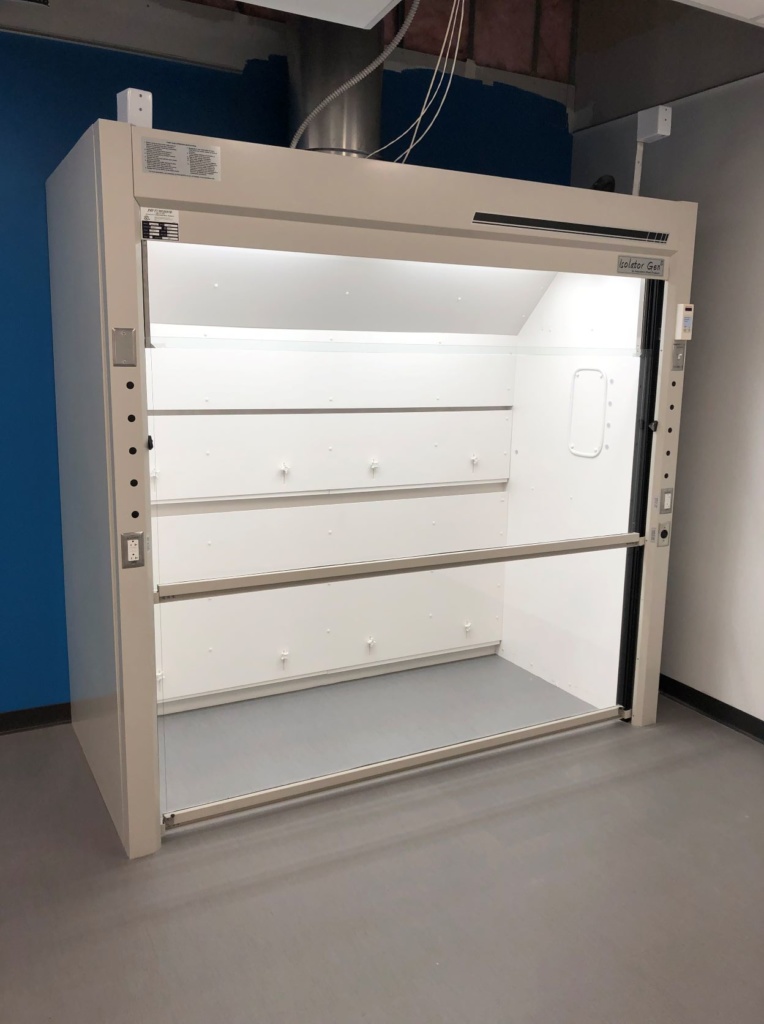
This allows users to bring carts, rolling equipment and large format distillation processes into the fume hood easily and work on them as-needed. The common name suggests, users can enter these fume hoods, but it is never advisable to allow anyone’s head to pass the opening of the fume hood once it has been put in service. The sash operation and configuration can vary and should be customized to serve the application needs with multiple vertical sashes, horizontal full-height sliding door panes, or combination sashes.
Mobile fume hoods
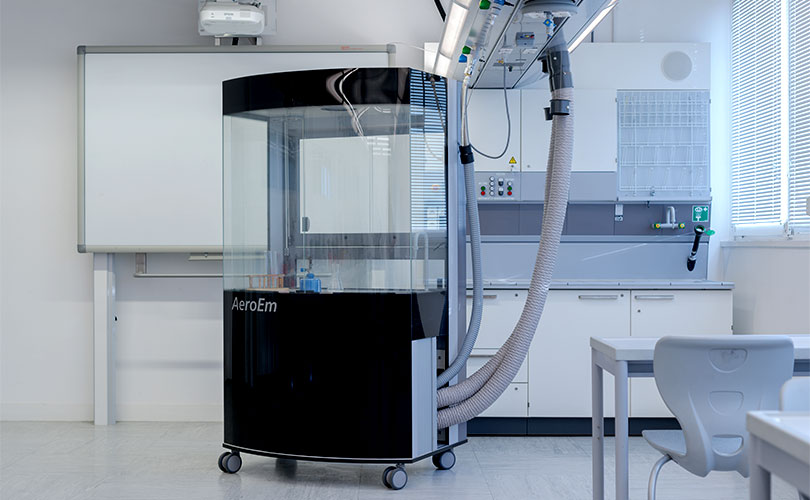
Demonstration hoods can be set on wheels to ****route ****to different laboratories or classrooms. This can be helpful for teaching and instruction if a facility doesn’t have hoods in every lab location. These hoods must be connected to fixed exhaust systems by flexible hoses once they have been moved to the destination.
Filtered hoods are great for use as a mobile fume hood because they do not require ducting and are most often seen in teaching environments where the chemicals being used are known ahead of time.
General Use Chemical Fume Hoods
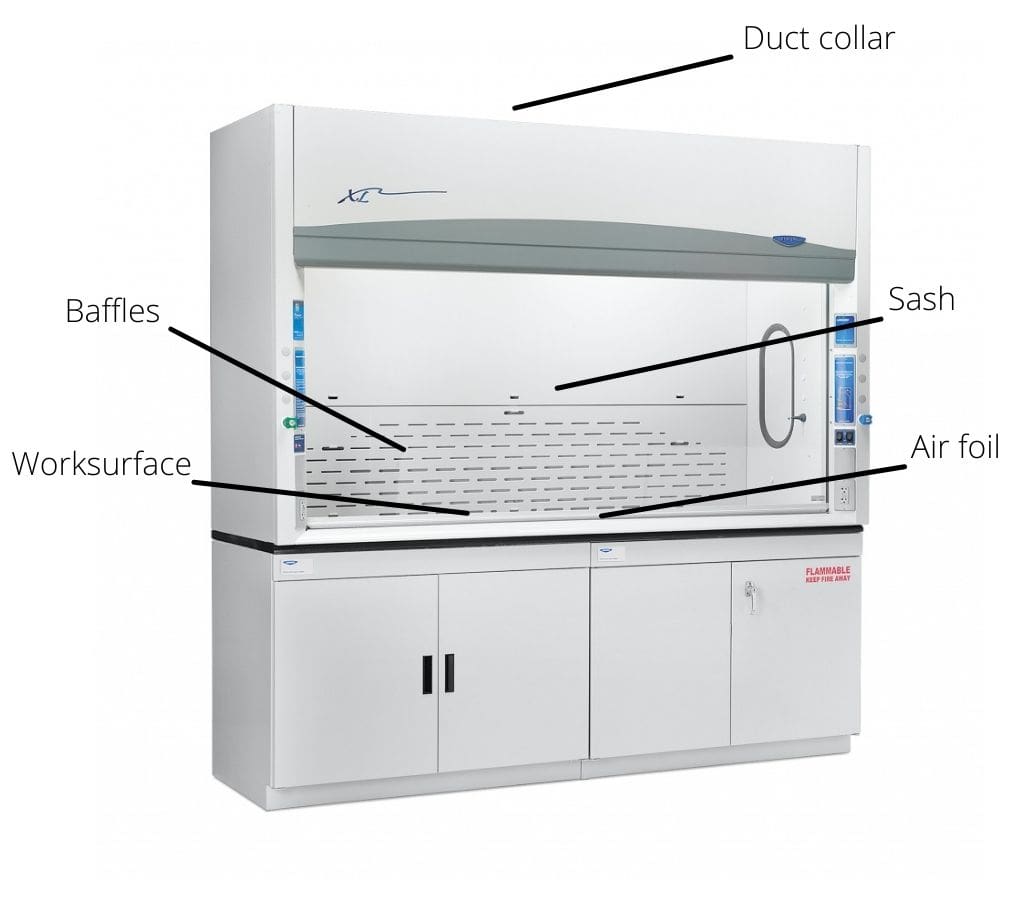
This hood is the predominantly used fume hood and can be found in advanced pharmaceutical research labs and the local high school chemistry prep room. It’s purpose is to, like all hoods, contain chemical activity and the resulting fumes and gasses and facilitate them being safely discharged away from the laboratory and the user.
Today’s chemical hoods are quite advanced in their airflow handling designs. And the marketplace has zeroed-in on the most ideal materials to use in most applications. As a result, they can withstand most lab applications and are the “all-around’ player. Acids, solvents, heat, lighter-than-air inert gasses, wet operations.. this is generally the place to start.
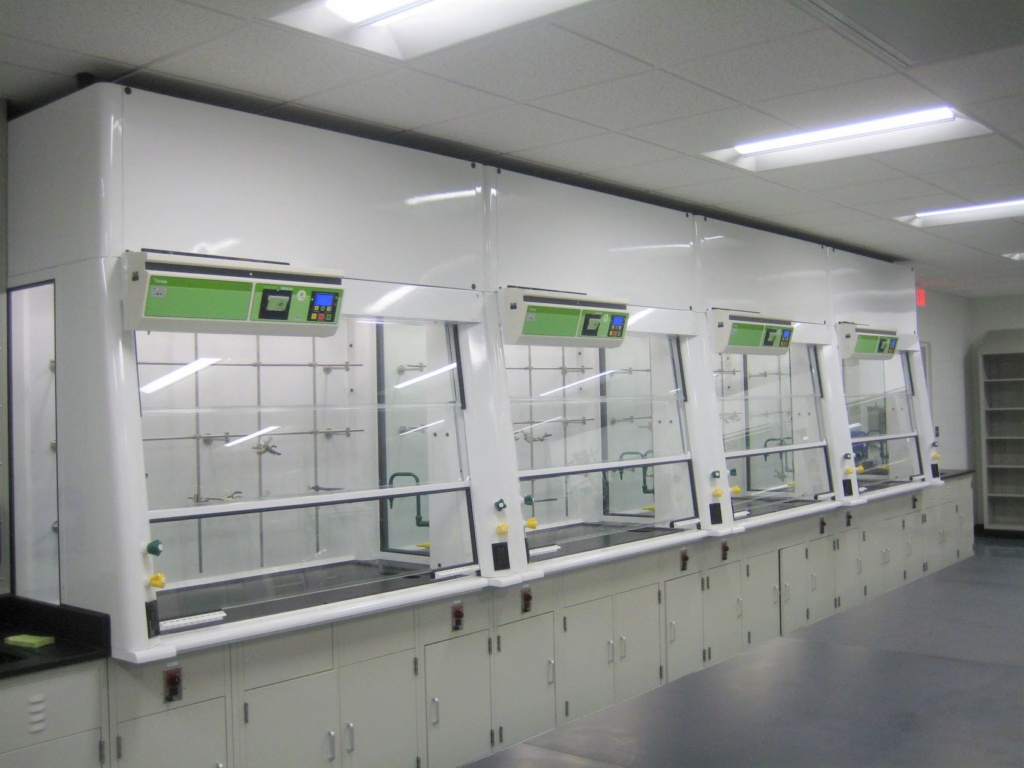
Variable air volume (VAV) fume hoods: air flow output adjusts based on the position of the sash. If the hood is in use with an unattended experiment, the sash can be left down and significantly reduce the energy consumption of the hood. As the sash is raised, signals are sent to the exhaust system telling it to ramp up the individual hoods' airflow and respond to the increased containment demand.*Allows of energy savings when paired with appropriate building exhaust. More expensive installation and ongoing maintenance.
Constant air volume (CAV) fume hoods: these fume hoods exhaust the same amount of air while the exhaust system is in operation. Whether the sash is open or closed, if the fan is turned on, conditioned air will be leaving the building at a maximum rate. Simpler to install. Less expensive building infrastructure. Higher energy and conditioned air consumption.
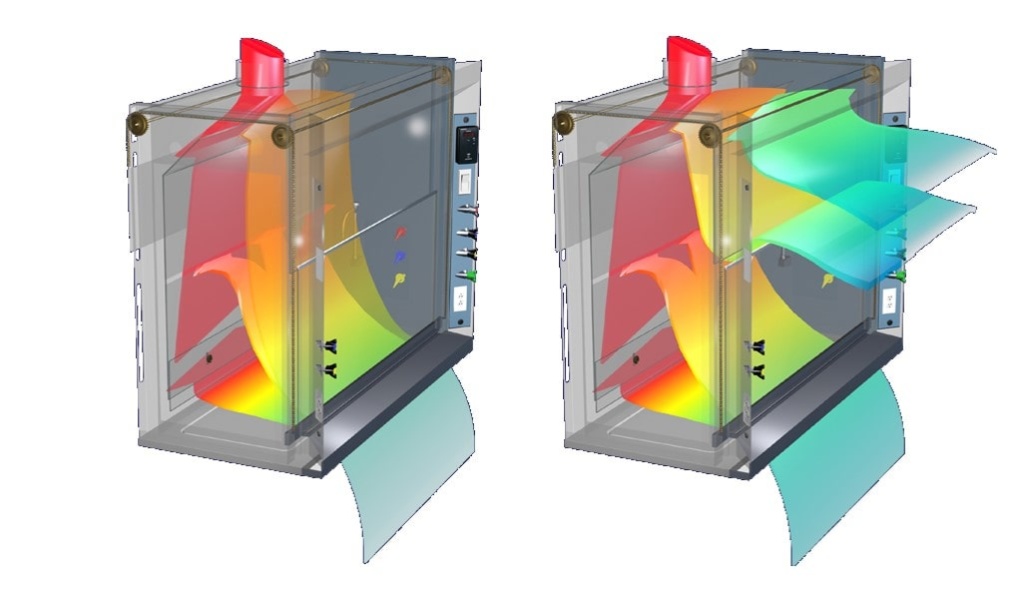
Filtered Fume Hoods: Filtering fume hoods are only appropriate for certain chemicals and uses. They require almost no energy to run, but are significantly more expensive to purchase and install. They are far less expensive to run over-than traditional fume hoods.
Biosafety cabinets
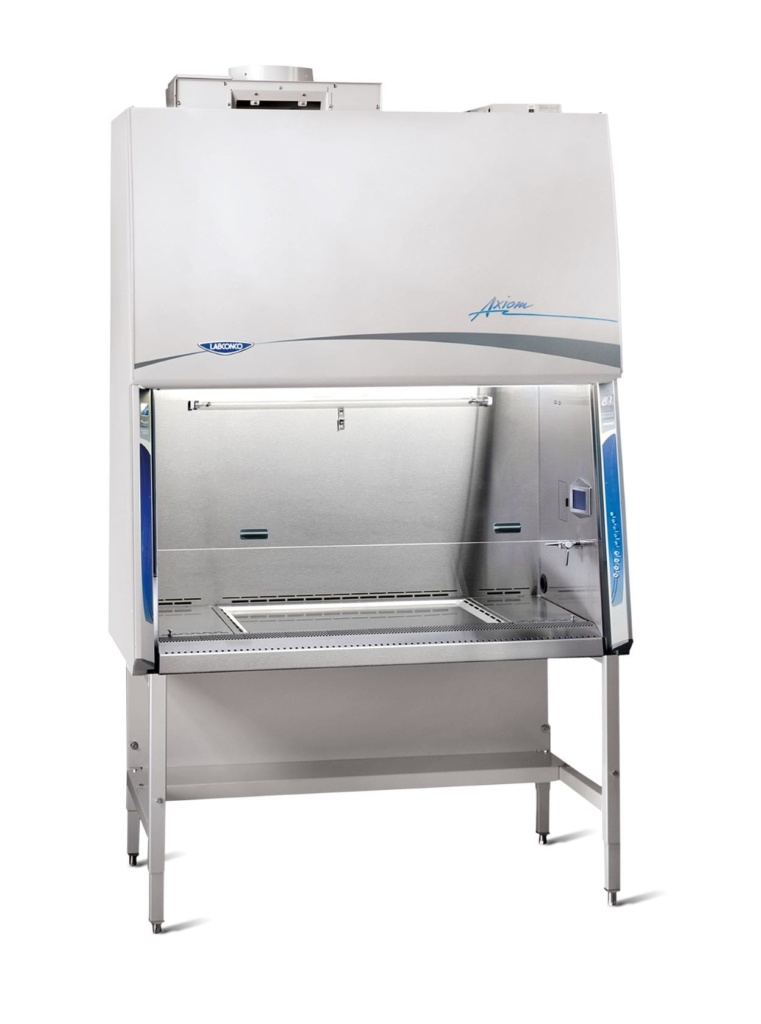
Biosafety cabinets share some similarities with fume hoods. However in contrast, the purpose of a biosafety cabinet is to protect the user as well as the sample or specimen in the hood chamber. While fume hoods exhaust air out of the building, biosafety cabinets filter air through a HEPA* filter and exhaust it back into the room.
These are most typically used in life-sciences applications for sampling and testing of biological agents. They do not typically involve heavy use of chemicals and rarely involve acids.
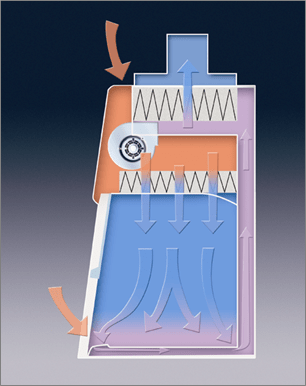
Bio-safety cabinets have two HEPA filters. One to filter the air that is blowing down on the sample being worked on in the hood (protecting the sample) and one to filter any air that is getting exhausted back into the laboratory workspace (protecting the user). This provides protection for the user from any potential harm originating in the specimen, but it also protects the specimen from contamination by the user.
*A HEPA filter is made up of pleated filter membrane that trap small particles. These can be anything from dust particles to viruses or bacteria. A HEPA filter will not stop chemical vapors from passing through which could potentially be dangerous or unpleasant for laboratory workers.
Specialty Use Fume Hoods
Radio-Isotope Hoods
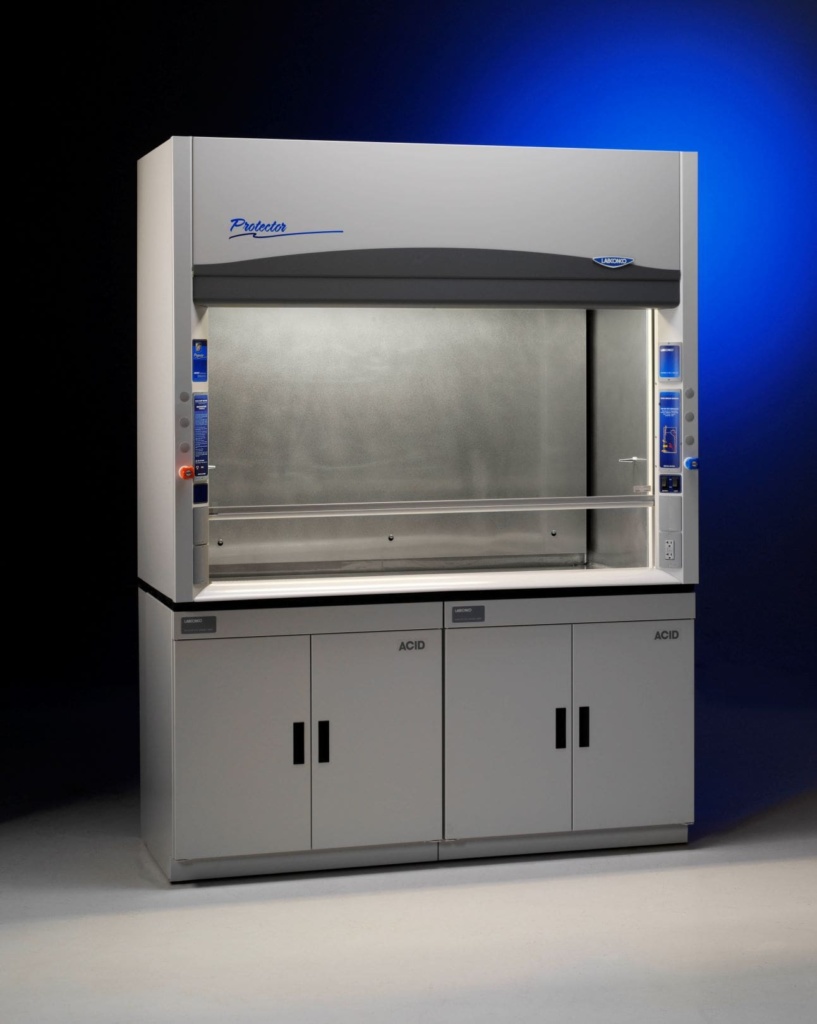
These can accept lead inserts to block certain radiation wavelengths and use stainless steel interiors with fully welded coved corners so they can be cleaned and purged of any lingering radioactive isotopes. These are used in the production of many cancer-fighting therapies.
Perchloric Acid Hood
Acid vapors crystalize when the fumes land on surfaces and dry out. With Perchloric Acid, these salts create a significant risk of explosion. Specialty features of these hoods involve a water wash down system that sprays water from the collar of the hood downward to rinse off any salt deposits and wash them down a drain. This ensures any potentially dangerous residues are safely disarmed and disposed.
Acid Digestion Hoods
General chemistry hoods can withstand exposure to most traditional laboratory chemicals. However, the process of acid digestion involves the use of highly concentrated acids in large quantities, often at high-temperatures (sometimes boiling) to bring a maximum corrosive effect on a test sample. This process is designed to break down metals and other substances.
These hoods incorporate special liners and sashes in order to withstand this abuse. The hood interiors are PVC, polypropylene or specialized ceramic liners and the sashes are usually a polycarbonate material so that it does not get etched and haze over time, like glass would.
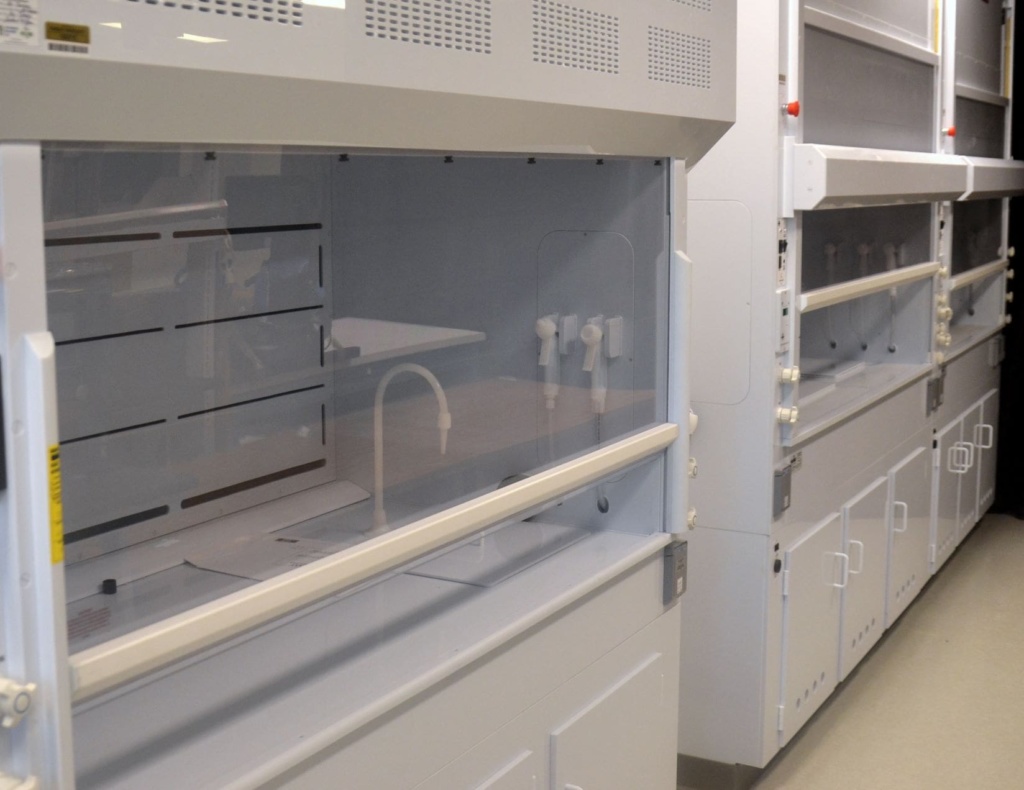
Trace Metals Analysis Hoods
These are infrequently used, but have a very specialized process to support. They involve analysis with high-concentrated acids, typically to identify the most minute presence of metals. Because of the process and the analytical results, fume hoods with metal in their structure create problems with results.
For this reason, these hoods are made entirely out of polymers, typically fire-rated polypropylene sheet goods that are welded and fused together. These are very expensive and very heavy, but when this particular analysis needs to be done, there is no better option.
Energy costs
Fume hoods are one of the most significant consumers of energy in national research laboratories. One fume hood in a laboratory can use as much energy as three homes per year..) This has made efficiency a major focus of innovation in the fume hood industry.
From the 1970’s to the present day, energy efficiency has taken the spotlight in developing new fume hood technology. Finding ways to make fume hoods consume less energy, while improving containment to the highest possible standard, has become a constant goal for fume hood manufacturers.
Because of their high energy consumption, laboratories want to mitigate fume hood use as much as possible. With that being said, fume hoods remain the most important safety tool in a laboratory and are essential for protecting users.
Collaborate with trusted vendors and manufacturers to make the best choices for your facility for future energy costs.
Choosing a fume hood
There is no “one-size-fits-all” solution. User needs, laboratory layouts, experiments and processes, building ventilation, energy costs and budget all play a part in determining what fume hood is the best option for you.
With the right planning and help from knowledgeable advisors, laboratories have a much better chance of creating an effective and efficient fume hood configuration in their space. Understanding the appropriate applications for specific fume hoods is essential for managing waste and maximizing productivity.